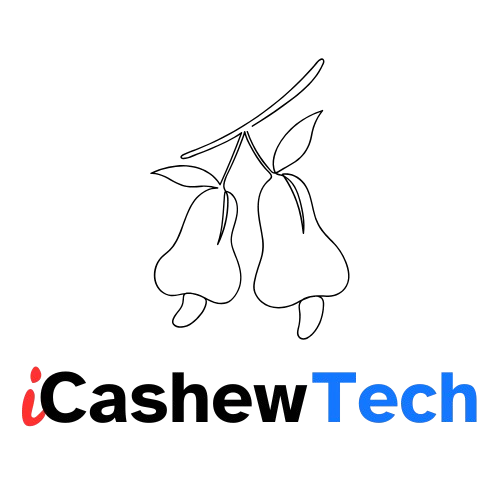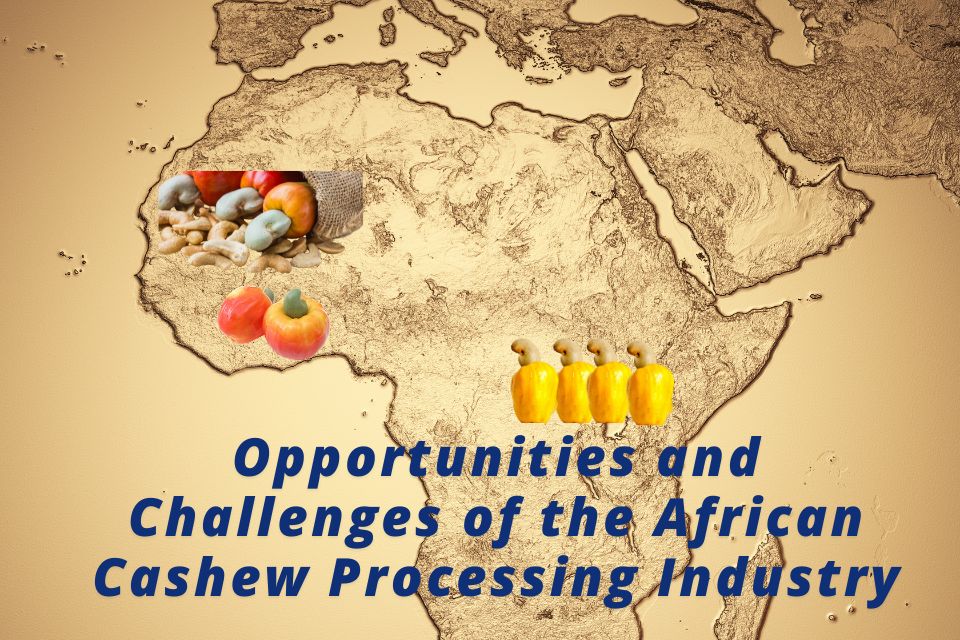The Evolution of Sustainable Cashew Processing: Advanced Pyrolysis Shell Burner Technology
In the heart of every cashew processing facility lies a fundamental challenge that has persisted for decades. The traditional method of generating steam, essential for cooking raw cashews and drying kernels, relies heavily on burning cashew shells and wood as fuel.
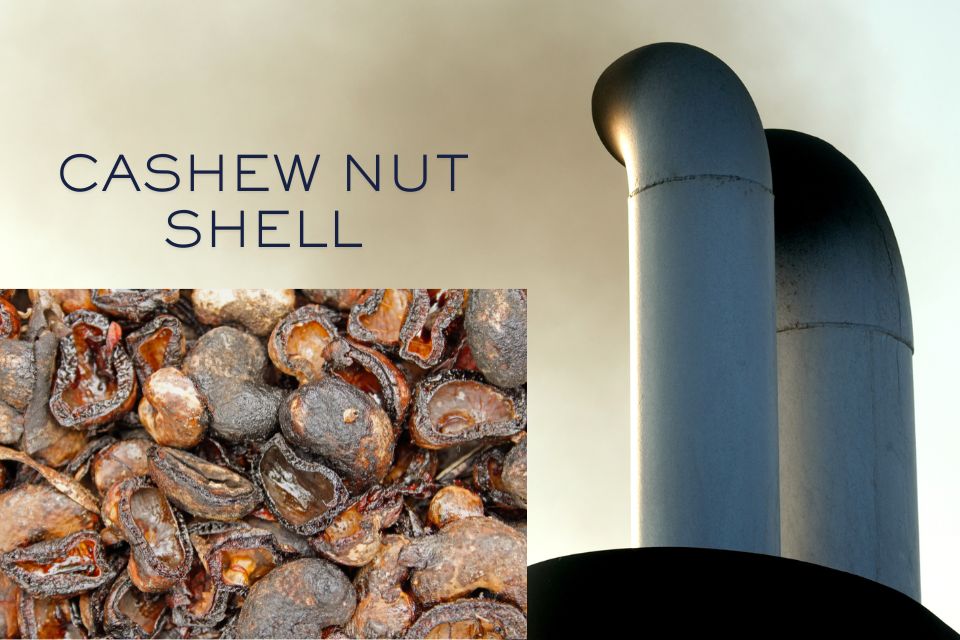
Introduction: The Smoke Challenge in Cashew Processing
While this practice seemingly offers a solution for waste disposal, it creates a significant environmental burden through excessive smoke emission. Processing facilities, particularly during peak seasons, often find themselves shrouded in thick smoke, affecting both worker health and local air quality.
Understanding the Traditional Process
The conventional steam generation system in cashew processing involves direct combustion of cashew shells and wood in boilers. This process, while seemingly economical due to the readily available fuel source, presents multiple challenges:
Operational Challenges
The direct burning method leads to irregular combustion patterns, resulting in fluctuating steam pressure and temperature. This inconsistency affects product quality and processing efficiency. Operators often struggle with maintaining optimal steam levels, leading to either undercooked or overprocessed cashews.
Environmental Impact
Traditional burning methods create a cascade of environmental issues:
- Heavy smoke emission pollutes local air quality
- Improper shell disposal leads to soil degradation
- Leachate from shell dumps contaminates groundwater
- Excessive carbon emissions contribute to climate change
Health and Safety Concerns
Workers in traditional processing units face significant health risks:
- Respiratory issues from constant smoke exposure
- Eye irritation and visibility problems
- Increased risk of workplace accidents due to poor visibility
- Long-term health implications from prolonged exposure
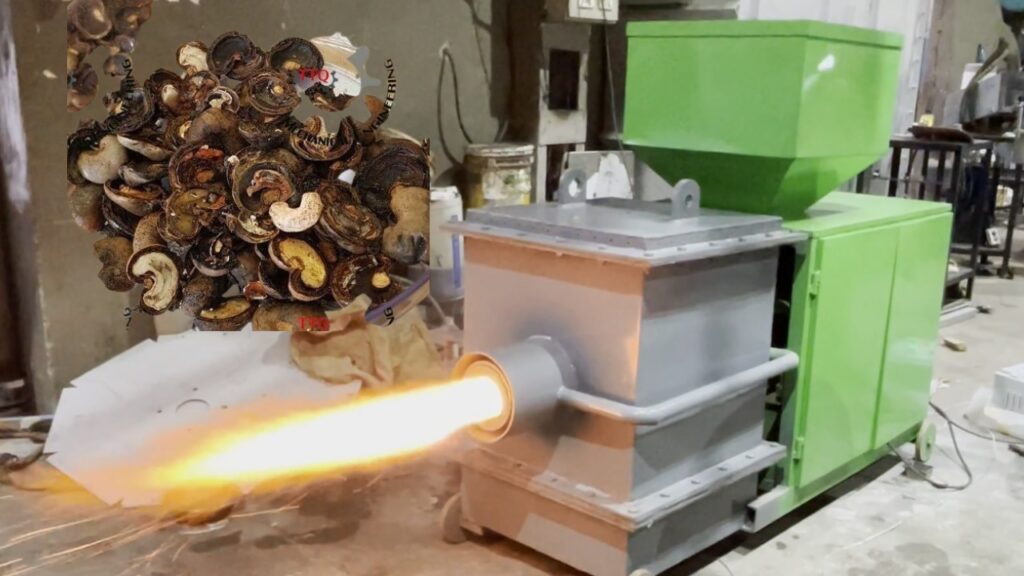
The Pyrolysis Revolution: A Technical Deep Dive
Our advanced Pyrolysis Cashew Shell Burner System represents a paradigm shift in cashew processing technology. The system’s sophisticated design addresses multiple challenges through controlled, scientific combustion.
The Pyrolysis Process Explained
Pyrolysis involves the thermal decomposition of cashew shells in an oxygen-controlled environment. This process occurs in several stages:
- Pre-heating Phase:
- Shells are gradually heated to optimal temperature
- Moisture content is reduced systematically
- Material preparation for efficient combustion
- Primary Pyrolysis:
- Controlled decomposition at specific temperatures
- Generation of combustible gases
- Formation of carbon-rich char
- Secondary Combustion:
- Burning of pyrolysis gases
- Complete combustion ensuring minimal smoke
- Maximum energy extraction
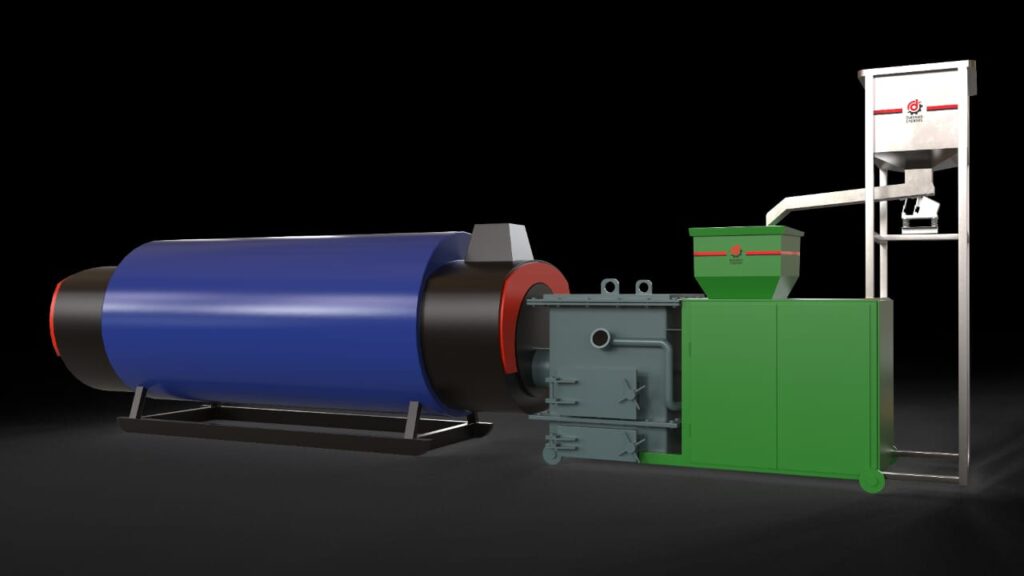
Technical Innovation Features
The system incorporates multiple technological advancements:
Automated Feed Control
- Continuous monitoring of fuel input
- Precise shell feeding mechanisms
- Optimal fuel-to-air ratio maintenance
Temperature Management
- Multi-zone temperature control
- Thermal feedback systems
- Automated adjustment mechanisms
Emission Control
- Advanced smoke reduction technology
- Particulate matter filtration
- Clean exhaust management
Implementation Success Story: Gambia Installation
Our recent implementation in Gambia serves as a testament to the system’s effectiveness. The facility, previously struggling with excessive smoke emissions and environmental compliance issues, underwent a complete transformation.
Project Implementation Phases
Phase 1: Assessment and Planning
- Comprehensive site evaluation
- Existing system analysis
- Custom solution design
- Implementation timeline development
Phase 2: Installation and Integration
- Minimal disruption to ongoing operations
- Systematic equipment installation
- Integration with existing infrastructure
- Safety system implementation
Phase 3: Optimization and Training
- System fine-tuning
- Operator training programs
- Performance monitoring
- Efficiency optimization
Measurable Results
The Gambia installation demonstrated remarkable improvements:
Environmental Impact
- 90% reduction in visible smoke
- Minimal ash residue
- Improved air quality
- Reduced carbon footprint
Operational Efficiency
- Consistent steam generation
- Reduced fuel consumption
- Lower maintenance requirements
- Improved product quality
Return on Investment Analysis
The system’s economic benefits extend beyond environmental compliance:
Direct Cost Savings
- Reduced Fuel Consumption:
- Efficient burning process
- Better energy extraction
- Lower fuel requirements
- Maintenance Cost Reduction:
- Fewer breakdowns
- Extended equipment life
- Reduced repair needs
Indirect Benefits
- Environmental Compliance:
- Meeting regulatory standards
- Avoiding potential fines
- Enhanced corporate image
- Operational Improvements:
- Better working conditions
- Increased productivity
- Higher product quality
Conclusion and Future Outlook
The Advanced Pyrolysis Cashew Shell Burner System represents more than just an technological upgrade; it’s a comprehensive solution for sustainable cashew processing. As the industry moves towards more environmentally conscious practices, this system offers a proven path forward.
Call to Action
Ready to revolutionize your cashew processing operation? Contact our team of experts for:
- Detailed technical consultation
- Custom solution design
- Implementation planning
- ROI analysis
- Environmental impact assessment
📧 Email: contact.rahul1978@gmail.com
📱 WhatsApp: +84 9086 35 704
🌐 Website: https://cashew-technology.com
